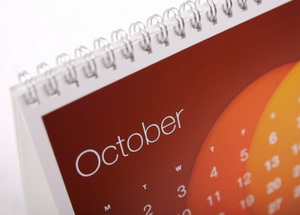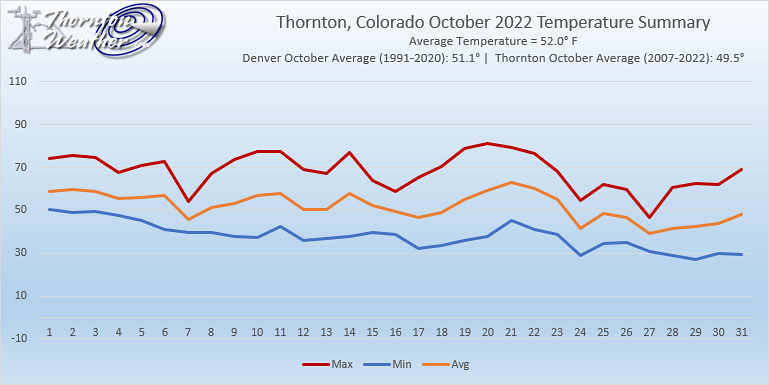
The further we go into the cold season, the more we see significant winter-like events in our look back at Denver weather history. Many significant snowstorms have occurred this week in the past including one in 1946 that dumped more than 30 inches of snow on Denver.
From the National Weather Service:
27-30
In 2009…a powerful early season storm brought heavy snow to the Front Range. The combination of a deep northeasterly upslope flow coupled with abundant moisture and lift with the developing storm system produced an extended period of moderate to heavy snowfall. The heavy wet snow accumulated on trees and resulted in broken branches and scattered electrical outages. Interstates 70 and 76 were closed east of Denver. Numerous other roads and highways were shut down. The Red Cross set up numerous emergency shelters for stranded travelers. The blowing snow at Denver International Airport forced the cancellation of hundreds of flights. Schools were also closed. In the foothills storm totals included: 46 inches… 3 miles southeast of Pinecliffe; 42 inches…3 miles southwest of Conifer; 34 inches…3 miles north of Blackhawk; 30 inches at Aspen Springs and near Evergreen… 23 inches at Roxborough Park…and 20 inches…3 miles south-southeast of Morrison. Across the Urban Corridor storm totals included: 25 inches in Highlands Ranch; 21.5 inches near Louisville…20.5 inches in Broomfield…20 inches at Lafayette…17.5 inches in Boulder…17 inches in Westminster…16.5 inches in Erie; 15.5 inches in Arvada and 5 miles west-northwest of Littleton…15 inches in Littleton…14 inches in Englewood…13.5 inches in Lakewood and 6 miles north of Thornton; 13.3 inches at Denver International Airport…11 inches…4 miles south of Denver; 10.5 inches…2 miles north of Cherry Hills Village and Niwot.
28-29
In 1993…an upper level disturbance combined with a moist upslope flow to bring heavy snow to portions of metro Denver. Snowfall amounts ranged from 5.4 inches at Stapleton International Airport to 14 inches in Boulder. New snowfall totaled 8 inches at Gross Reservoir in the foothills 5 miles southwest of Boulder. On the 28th…north winds gusted to 30 mph at Stapleton International Airport where the temperature climbed to only 25 degrees on the 29th…equaling the record low maximum for the date.
28-30
In 1971…a vigorous cold front plunged temperatures from a high of 70 degrees on the 27th to record low levels on the 29th and 30th. Snowfall totaled 3.1 inches at Stapleton International Airport where north winds gusted to 23 mph. Some freezing drizzle also fell on the 28th. Record daily low maximum temperatures of 32 degrees on the 28th and 25 degrees on the 29th were established along with a daily record minimum of 13 degrees on the 30th.
28-31
In 1929…rain changed to snow on the afternoon of the 28th and continued until midday on the 30th followed by intermittent light snow which continued through the 31st. Snowfall over the four days totaled 16.2 inches in the city. Most of the snow…8.5 inches…fell on the 29th with 6.1 inches on the 30th. Temperatures hovered in 20’s during most of the storm.
29
In 1917…the all-time lowest recorded temperature in October…2 degrees below zero…occurred. This is also the earliest below zero reading of the season.
In 1939…the first measurable snow of the season totaled 5.6 inches in downtown Denver. Post-frontal northeast winds were sustained to 28 mph.
In 1961…heavy snowfall measured 6.0 inches at Stapleton Airport where northeast winds gusted to 30 mph.
In 1973…strong winds caused some damage to homes…stores… And utility lines along the foothills from metro Denver south.
In 1981…high winds buffeted the Front Range foothills with gusts to 55 mph in south Boulder.
In 1996…high winds gusting from 70 to around 100 mph blasted metro Denver. One man was killed when a strong wind gust overturned a pop-up camper onto him while he was trying to secure it. In addition…five people at the Rocky Flats Environmental Test Facility received minor injuries when several windshields were blown out of their cars…spraying glass onto the occupants. Several trees and power lines were also downed. Two 75-foot high pine trees were uprooted at the Mt. Olivet cemetery in Arvada. Property damage from the windstorm ran into the millions of dollars. The highest recorded wind gusts included: 101 mph at Jefferson County Airport near Broomfield…100 mph in Golden Gate Canyon…96 mph in Coal Creek Canyon…and 87 mph at upper Table Mesa in Boulder. West-northwest winds gusted to 43 mph at Denver International Airport. Insured damage from the wind storm totaled 5.2 million dollars…the third most costly storm of record in Colorado at the time.
In 2003…strong Chinook winds developed in and near the Front Range foothills. Winds gusting to 80 mph in Boulder downed several trees and power lines…causing damage and triggering scattered electrical outages. The combination of strong winds…very dry fuel conditions…and downed power lines sparked two large wildfires. The overland wildfire in Boulder County…near Jamestown…consumed nearly 3900 acres and destroyed 12 structures…including homes…trailers…and out-buildings. Preliminary damage estimates for the value of lost property was nearly one million dollars. In Douglas County…the Cherokee Ranch wildfire consumed 1200 acres and destroyed 4 structures. The large smoke plumes from both fires were highly visible across metro Denver. West winds gusted to 45 mph at Denver International Airport.
29-30
In 1905…heavy snowfall developed on the evening of the 29th and continued through the evening of the 30th. Snowfall totaled 11.0 inches in downtown Denver. Precipitation was 1.02 inches. Temperatures were generally in the 20’s.
In 1959…rain during most of the day on the 28th changed to snow early on the 29th and continued through most of the 30th. Heavy snowfall totaled 7.4 inches at Stapleton Airport. North-northeast winds gusted to 24 mph on the 30th. Some freezing drizzle also occurred on the 30th.
In 1981…4 to 8 inches of new snow were recorded in the foothills west of Denver. Snowfall totaled only 0.4 inch at Stapleton International Airport where north winds gusted to 25 mph.
In 2019…a strong storm system brought record breaking temperatures and up to a foot of new snow to parts of Denver…especially across the south and southeast portions of the metro area down to the Palmer Divide. In Denver… a record low maximum temperatures of 18 was set on the 29th… followed by a record low temperatures of 3 degrees on the 30th. The combination of snow and wind along the Interstate 70 corridor east of Denver forced its closure in both directions for several hours due to drifting snow and poor visibility. One weather related traffic fatality…occurred in the foothills west of Denver which closed State Highway 6. The official snowfall measurement at Denver International Airport was 7.7 inches. Numerous schools in and around the Denver area and to the east were closed due to heavy snow and hazardous road conditions. Cancellations and delayed flights at Denver International Airport left 800 passengers stranded at the airport overnight. Along the urban corridor and Palmer Divide storm totals included: Storm totals included: 12 inches at Ponderosa Park…10 inches near Foxfield; and Parker; 8.5 inches in southwest Aurora; near Buckley AFB…Cherry Creek…east Denver…and southwest Aurora; 8 inches in Boulder and near Elizabeth…Federal Heights…Louisville and Westminster; 7.5 inches near Castle Pines…7 inches in southwest Aurora and near Shamballa and Quincy Reservoir; 6.5 inches near Rocky Flats; 6 inches near Byers…Elbert…Greenwood and Lakewood. Continue reading October 29 to November 4: This week in Denver weather history

 With the first full month of fall here, October usually brings one of the quietest weather months in the Denver area with plenty of mild, sunny days and clear, cool nights.
With the first full month of fall here, October usually brings one of the quietest weather months in the Denver area with plenty of mild, sunny days and clear, cool nights.

